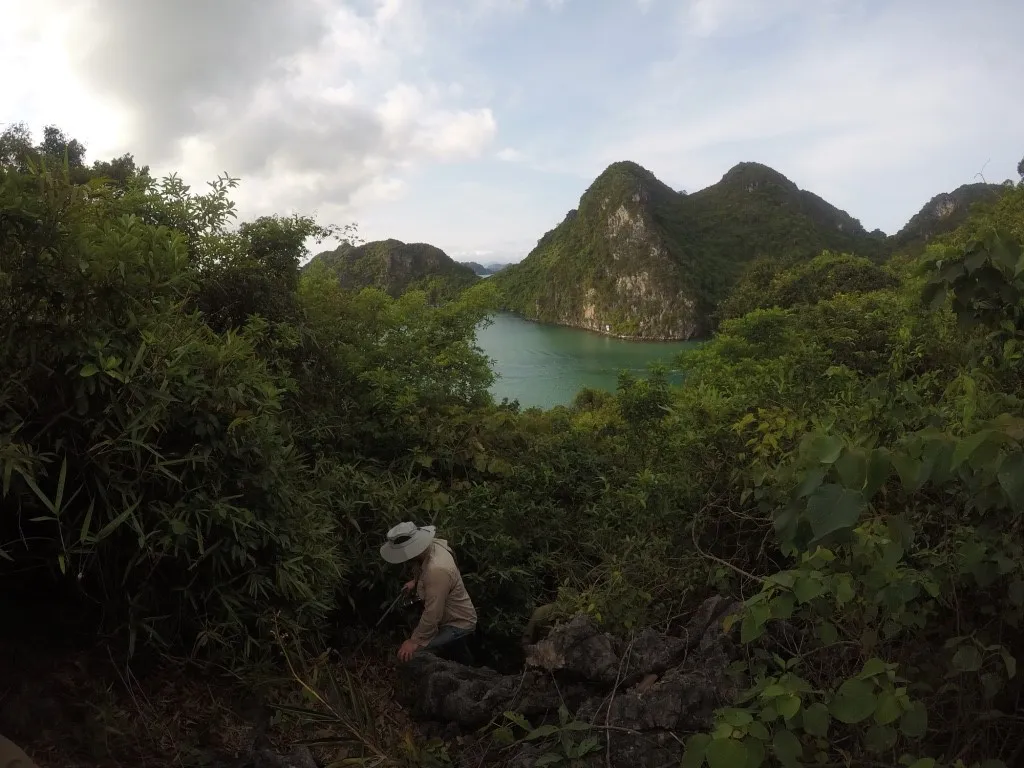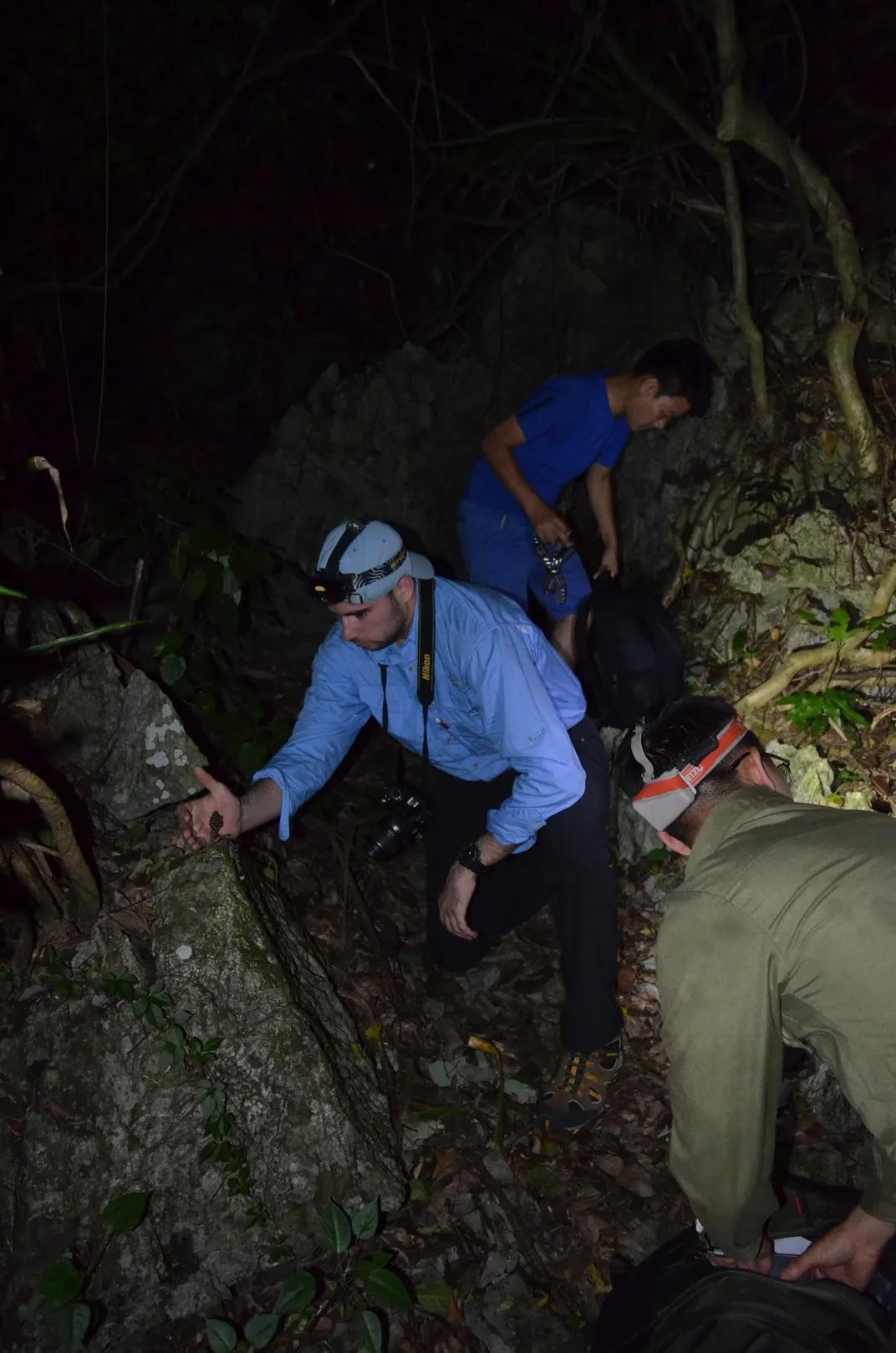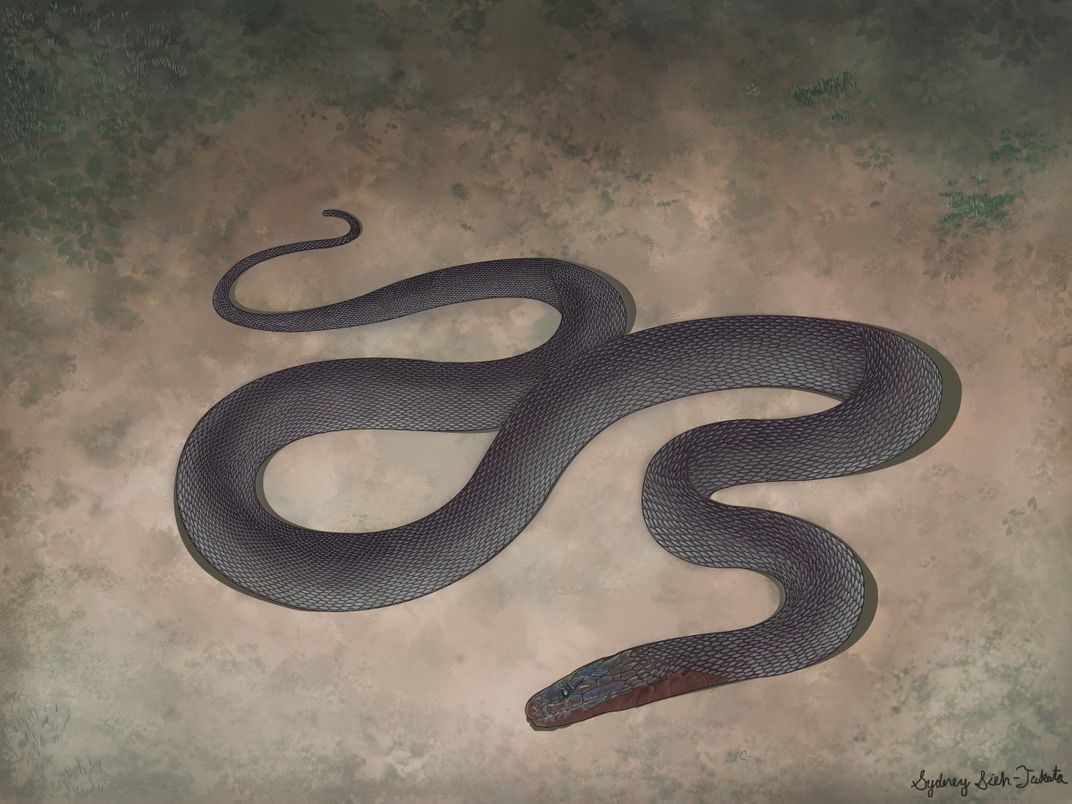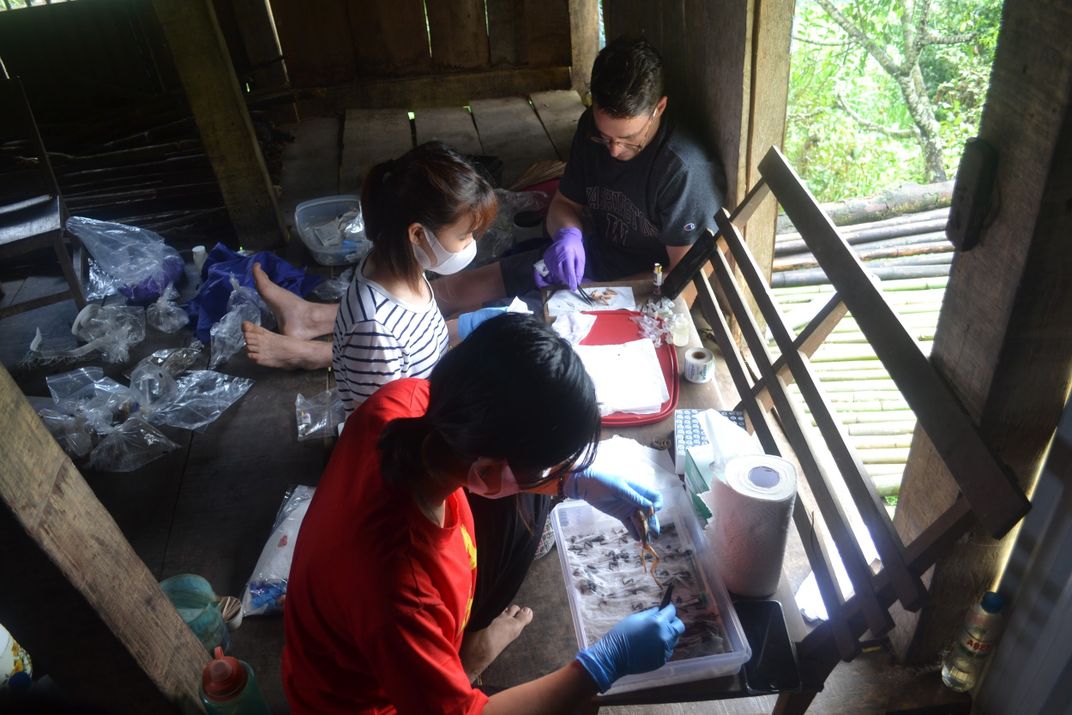NATIONAL MUSEUM OF NATURAL HISTORY
Rare Iridescent Snake Discovered in Vietnam
The discovery could help scientists piece together new information about snake evolution.
:focal(1044x700:1045x701)/https://tf-cmsv2-smithsonianmag-media.s3.amazonaws.com/blogging/featured/A_close_up_of_a_snake_head_on_a_black_background..jpg)
Looming limestone mountains called karst formations rise abruptly from rivers, bays and valleys in northern Vietnam. In a region of the world already rich with life, these karsts and the lush green forests that cover them create habitats that support extreme biodiversity. Many of the species are endemic to the area, meaning they only exist there.
In a paper published today in the journal Copeia, researchers from the Smithsonian’s National Museum of Natural History and the Institute for Ecology and Biological Resources at the Vietnam Academy of Science and Technology described a new species of snake that they discovered in the Ha Giang province. The species is part of a rare genus of burrowing snakes that branched from the evolutionary tree earlier than most other groups. Because of this, they look and behave unlike many other snakes and could help scientists piece together new information about snake evolution.
The researchers named the new species Achalinus zugorum in honor of the Smithsonian’s retired curator of reptiles and amphibians, George Zug, and his wife, Patricia Zug.

Scaling up local work
The international team of researchers surveyed karst forests in the summer of 2019 to learn more about northern Vietnam’s species diversity. The work supports the broader mission of the Global Genome Biodiversity Network: to sequence the DNA of as many species as possible within the next few years.
This monumental effort depends on local fieldwork and collaborations across organizations. “When you see these species descriptions come out, they seem like a very small piece of the puzzle,” said lead author Aryeh Miller, a research fellow at the Smithsonian’s National Museum of Natural History and a graduate student at Washington University in St Louis. “But when everyone’s working on these smaller projects, it facilitates big, macro-evolutionary studies about the evolution of life.”
Miller first met co-author Truong Nguyen, the Vice Director of the Institute for Ecology and Biological Resources at the Vietnam Academy of Science and Technology, as a freshman in college. His Smithsonian mentors encouraged the partnership, and eventually Ari and colleagues wrote a proposal for studying amphibian and reptile diversity in northern Vietnam. They assembled a research group and secured funding from the Smithsonian’s Global Genome Initiative, which aims to collect, store and share the DNA of Earth’s biodiversity with researchers around the world.
The road to discovery
The group spent evenings wading through creeks and hiking through jungles, catching and recording information about various frogs and snakes along the way. One evening, while on the way to a survey site, the scientists spotted a strange snake on the road. It had dark, iridescent coloration with small, ridged — called keeled — scales. The crew knew right away that it was a new species.

“That was a really exciting moment,” said Miller. “The specimen looks very different. So different, in fact, that we didn’t know immediately what it was.”
The snake’s strange appearance made it difficult to classify at first. But later that night, the researchers realized it belongs to the rare genus Achalinus, commonly known as odd-scaled snakes.
“It’s part of a group of species that has some odd characteristics,” said Dr. Kevin de Queiroz, co-author on the paper and curator of amphibians and reptiles at the Smithsonian. “These snakes have fairly small scales, with skin exposed between them.”
The researchers don’t know much about the snake’s behavior, but its physical traits — odd scale pattern; dark, iridescent coloration and the absence of bright-light photoreceptors in its eyes — suggest that it burrows underground or beneath leaves. This subterranean lifestyle makes these snakes particularly hard to find, even for scientists who have spent decades in the field.
“In 22 years of surveying reptiles in Vietnam, I have collected only six odd-scaled snakes,” said Nguyen. “This is one of the most poorly studied groups of reptiles.” As they conduct more biodiversity surveys, the group hopes to find other Achalinus snakes and learn more about their behavior.

The researchers brought the Achalinus zugorum specimen to the Smithsonian where they sampled and sequenced the snake’s DNA and added it to the biorepository. They will soon send the specimen back to Vietnam to be catalogued. Nguyen said he hopes the discovery will motivate people to pay more attention to conservation in Vietnam and protect biodiversity in the karst ecosystems, which face threats from quarrying, rapid deforestation and species over-harvesting.
“It’s happening so quickly that we can’t keep up,” said Miller. “Some of the species unique to this region are gone before they’re even described.” The scientists plan to continue surveying and searching for new species in the area, potentially inspiring protection strategies along the way. “The goal is to eventually find ways for the environment and people to coexist,” said Miller.

The origin of zugorum
When it came time to name the new species, the team used the opportunity to thank retired Smithsonian curator George Zug and his wife, Patricia Zug, for their work in the field and with students over the years.
“Scientists from the Smithsonian and the Institute of Ecology and Biological Resources at the Vietnam Academy of Science and Technology, have known each other for several years via George Zug,” said Nguyen. “We built a partnership around biodiversity research and conservation in Vietnam, so we are happy to name a new species after professor Zug and his wife.”
Zug has made immense contributions to the field of herpetology, but it was his and his wife’s guidance of young scientists that inspired the honorary species name.
“George has dedicated much of his career to the mentorship of students, and I think this deserves recognition,” said Miller. “His wife Patricia has also been a very supportive person throughout my career.”
Miller met Zug as a junior in high school at a herpetology social event and became his intern soon after. Working elbow-to-elbow in Zug’s office, the two became friends. Zug finds the personal friendships that result from mentorships to be one of the most gratifying elements of working with interns.
“That in itself is rewarding,” said Zug. Now, he has received the more tangible reward of a permanent species name. “Achalinus is such a unique group of snakes,” he said. “It is an incredible honor.”
Related Stories:
Scientists to Read DNA of All Eukaryotes in 10 Years
Landmark Study Shares Smithsonian Bird DNA Collected Over Three Decades
Viper’s DNA Reveals Ancient Map of South America

